The GE Responder 3000, also known as the Marquette Responder 3000, is a portable defibrillator, providing advanced cardiac care in medical emergencies. Lightweight and versatile, it features an integrated ECG monitor, making it suitable for both hospital and prehospital settings, including ambulances with mounting support. With options for manual and semiautomatic defibrillation, adaptable electrodes, and optional upgrades for ECG and pulse oximetry measurement, it is an essential tool for healthcare professionals, ensuring rapid response and effective treatment in critical cardiac emergencies.
Defibrillator RESPONDER 3000 - Good Condition 2000


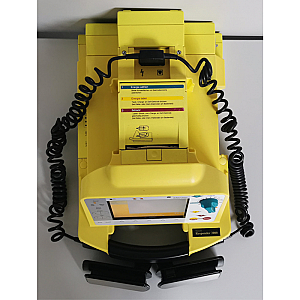


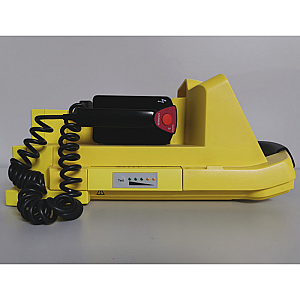
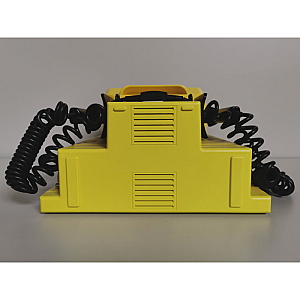
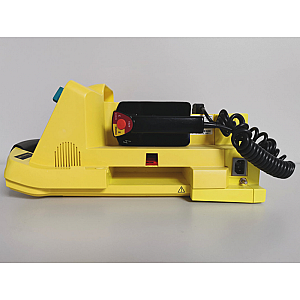
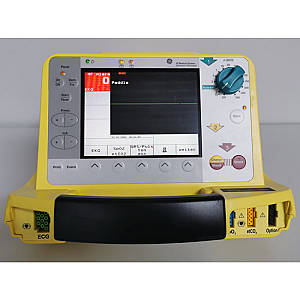








Offer Details
Accessories :
Sold with the paddles
Description
GE Responder 3000: Advancing Emergency Cardiac Care with Cutting-Edge Technology and Versatile Functionality
The GE Responder 3000 portable defibrillator, also known as the Marquette Responder 3000, represents a cutting-edge advancement in emergency medical technology. Designed to be lightweight and portable, it offers a comprehensive solution for cardiac care with its integrated ECG monitor and recorder. Its versatility makes it suitable for both hospital and prehospital settings, including ambulance use when paired with a vehicle mounting unit.
This defibrillator comes in two versions to accommodate varying needs and scenarios. The manual defibrillation version provides full control over the delivery of shocks, while the semiautomatic version offers the flexibility to switch between automatic and manual operation as required. Both versions are equipped to administer synchronized and non-synchronized defibrillation shocks, ensuring prompt and effective treatment in critical situations.
A range of paddle types can be utilized with the Responder 3000, including hard paddles with integrated contact surfaces specifically designed for pediatric patients, adhesive electrodes, and internal spoons. This adaptability allows for optimal electrode placement and patient comfort during defibrillation procedures.
Moreover, the Responder 3000 offers expandable functionality through optional upgrades. These include a program for ECG measurement and interpretation using the 12SL algorithm, enabling enhanced diagnostic capabilities. Additionally, options such as an etCO2 measurement system for capnometry, an SpO2 measurement system for pulse oximetry, and a transcutaneous pacemaker further enhance the device's utility and diagnostic potential, providing comprehensive patient monitoring and care.
With its advanced features, compact design, and customizable options, the GE Responder 3000 portable defibrillator stands as a reliable and versatile tool in the hands of healthcare professionals, facilitating rapid response and effective treatment in critical cardiac emergencies.
The GE Responder 3000 portable defibrillator offers a user-friendly interface with a color concept for displayed information, allowing for quick and intuitive interpretation of data. With this system, users can easily identify the status of parameters: green indicates that the parameter reading is within normal limits, blue alerts to technical faults, red signifies alarm conditions, and yellow indicates system messages. This color-coded system enhances situational awareness and enables prompt responses to critical events.
In terms of data management, the defibrillator provides comprehensive memory capabilities for storing and documenting relevant procedure data. These include an event memory, ECG memory, trend memory, and memory for 12SL analysis results. This extensive memory storage ensures that critical information is captured and can be reviewed for analysis or documentation purposes.
Moreover, the integrated 3-channel recorder adds another layer of functionality to the Responder 3000. It can be initiated manually or set to start automatically, providing flexibility in recording procedures and ensuring that important data is captured accurately.
Powering the defibrillator is convenient and versatile, with multiple options available. It can be powered from an optional AC power adapter, which can be permanently attached to the device, or from one or two plug-in batteries. Additionally, the defibrillator can be powered from a vehicle mounting unit or wall mount unit, further enhancing its flexibility for use in various settings.
For battery recharging, users have several options to choose from. Recharging can be done via the optional AC power adapter, the optional charging unit, or the optional vehicle mounting system. This flexibility ensures that the device remains operational and ready for use, even in environments where access to power sources may be limited or intermittent.
Overall, the GE Responder 3000 portable defibrillator combines advanced technology with user-friendly features, making it a reliable and versatile tool for emergency medical professionals in both hospital and prehospital settings. Its intuitive interface, comprehensive memory capabilities, and flexible power options make it an essential component of any cardiac care protocol.
Features
- Lightweight and portable design
- Integrated ECG monitor and recorder
- Suitable for hospital and prehospital use
- Manual and semiautomatic defibrillation versions available
- Capable of delivering synchronized and non-synchronized defibrillation shocks
- Compatible with various paddle types, including hard paddles, adhesive electrodes, and internal spoons
- Optional upgrades for enhanced functionality, such as ECG measurement and interpretation
- Expandable options include etCO2 measurement, SpO2 measurement, and transcutaneous pacemaker
- User-friendly interface with color-coded display for quick interpretation of information
- Comprehensive memory storage for storing procedure data
- Integrated 3-channel recorder for manual and automatic recording
- Versatile power options, including AC power adapter and plug-in batteries
- Battery rechargeable via AC power adapter, charging unit, or vehicle mounting system
Technical Details
- Width: 307 mm
- Height 202 mm
- Depth: 412 mm (without AC power adapter) | 476 mm (with AC power adapter)
- Weight: with one battery approx. 8 kg (w/o. AC power adapter)
Attention: For more information, please refer to the PDF file.
Compatible Accessories
Without accessories.